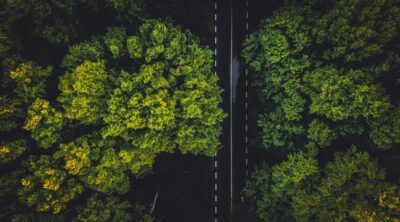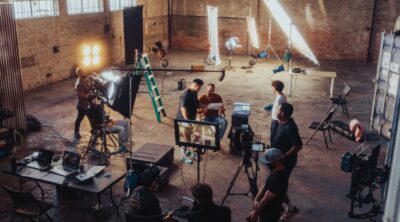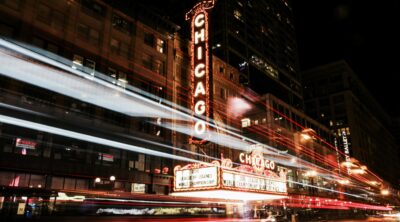< Back to all posts
10 Tips for Shooting Video in Washington D.C.
Every new on-location video production presents logistical challenges to Video Producers. Where can the video crew load into the Capitol? Who do I need to get permission from to shoot b-roll of the city or stand-ups on the Mall? On one hand, Washington D.C. has more red tape than most other domestic locations; on the other, video crews are an ingrained part of life on the hill, at the monuments, and within the city. Washington D.C. is consistently Crews Control’s second most scheduled location for video shoots. Wherever you want to capture footage in D.C. chances are our crews have been there. Here are some tips to keep in mind during pre-production to keep your video shoots running smoothly.
TEN: “One of the most important reminders for people coming to shoot in DC for the first time is that while it may LOOK as if the Capitol is near the Washington Monument, and the Lincoln Memorial is only a short jaunt away from the White House…that’s not the case. Large buildings distort perspective, it’s actually a 2.3 mile walk from the Capitol to the Lincoln Memorial” Production Manager Chris Cardno asks Producers to plan accordingly.
NINE: “Permits from the National Park Service are needed for shoots larger than a single cameraman on the Mall. That’s the grass park area that runs from the US Capitol to the Potomac River (pronounced po-tow-mac). If you plan to do interviews on the Mall, you will need a permit. A few pickup shots that are just B-roll are usually ok in my experience” says Crews Control represented DP Ed Reinsel.
EIGHT: Before you put down that tripod know where you are standing and who is in charge of that area. Cardno says “Trying to use a tripod in and around the National Mall, Capitol and monuments without a permit is going to get you shut down. The DC Film Office lists the various areas that require permits and their overseeing agencies. Keep in mind that they are all going to want plenty of notice, even for a quick stand-up, the National Park Service demands 96 hours to approve any applications.”
SEVEN: As in many large cities parking is a premium. Represented Director of Photography Charlie Kendall mentions “While minivans are not very stylish, they are the best form of crew transportation. When the garages get crowded they often won’t take Suburban or Tahoe sized vehicles.”
SIX: When you need a vetted location for a variety of backgrounds here is a great insider tip. “For shots of business professionals coming and going, ‘K and 17th’ street offers a variety of shots. Professional buildings, the Metro, and a park are all backgrounds from one location” says Kendall.
FIVE: “There are literally dozens of police jurisdictions in the Washington DC area. So as you can imagine, that means there is an incredible police presence. But, this also makes for some strange holes in the system. For instance, you can place a camera tripod in the middle of the now closed Pennsylvania Avenue at the White House, but you can’t set a tripod on the adjacent sidewalk or in Lafayette Park. Of course, the uniformed Secret Service will tell you to move if they don’t like the look of what you are doing, so keep this in mind” says Reinsel.
FOUR: Do you need a great spot to capture the Capital? “There’s a nice shot of the Capital looking up Pennsylvania Avenue with cars and activity in the foreground. You need to get into a safe spot in the median of Pennsylvania Ave. No one has ever asked for a permit there” says Kendall.
THREE: “Parking on Capitol Hill is scarce, which means that a crew is going to have to drop equipment off near any location and then go and park their vehicle, they’re then going to have to go and pick up that vehicle at the end of the day to load out. Build that time into your day, and expect to wait with the gear while they go and do that. Security and closed roads are the norm, so it really requires everyone working as a team (and a sensible schedule) to make the day work” explains Chris.
TWO: In addition to padding the schedule for parking, producers are also wise to allow time for long security lines and the potential of needing to use a loading dock. Ed Reinsel says “If you are going to any of the Capitol Hill buildings be sure to leave plenty of extra time for you and your crew. The security lines can be very time consuming first thing in the morning.” He goes onto to say “Increasingly, buildings in DC are requiring crews with large handcarts to enter through the loading dock.”
ONE: “The Capitol and the Congressional complex are under the jurisdiction of the Radio-Television Correspondents’ Gallery. Check their rules for videotaping and permitting when planning your shoot” says Crews Control’s V.P. of Production Valerie Nolan.
BONUS TIP: It is possible to capture non-news related video on Metro property (D.C.’s subway) and the Smithsonian Institutions (the National Zoo and most D.C. museums) when filming permits have been approved from those organizations.
When planning a video shoot in Washington D.C.it is possible to get access to your desired locations with a little planning, it is always best to pad your schedule, and a great crew can help you navigate the city. Please share your experiences about capturing footage in our nation’s capital on our blog, Twitter, Facebook, or LinkedIn.







I’m planning on filming the Mlion Woman March on DC Jan 21st. I’ll be a lone cameraithno crew, I’ll a video tripod, but no permit. I shooting w a Sony A7s with a cage and handle. Any advise for a lone camera operator with what secret service may think looks unlike a standard video camera? Can they take my gear?